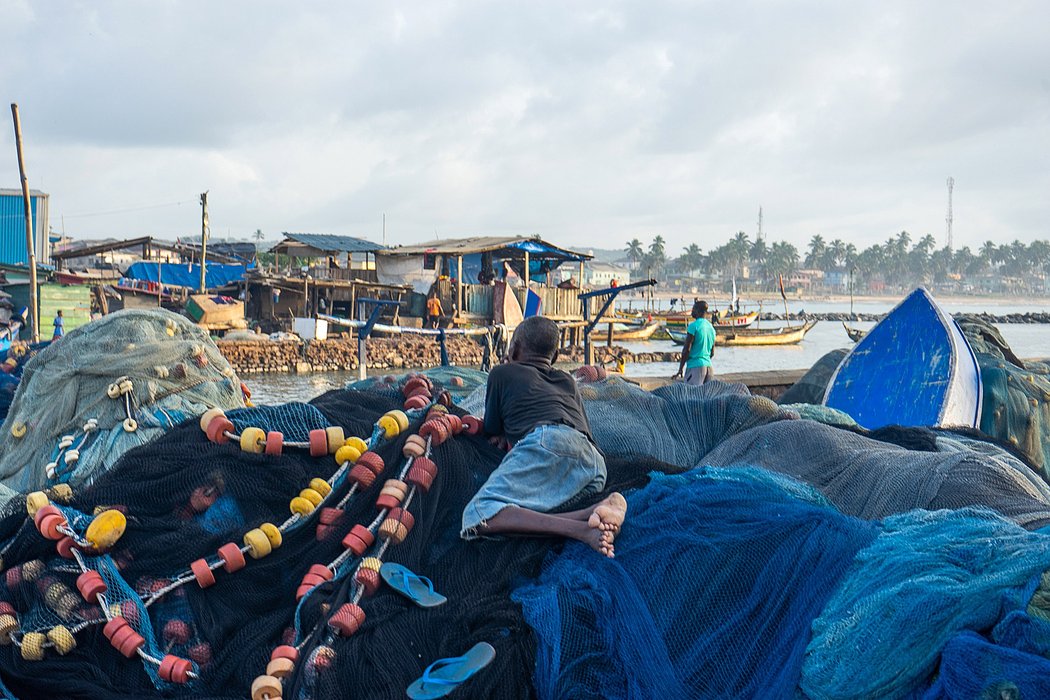Elmina and the Gold Coast
After being “discovered” by the European colonial powers in the late 15th century, it didn’t take long for the coastline of present-day Ghana to become highly coveted property… there’s a reason they called it the “Gold” Coast, and nobody wanted to miss out on the early plundering. The Portuguese were first on the scene, establishing Elmina Castle in 1482 to swap their goods for the abundant precious metals of West Africa. But other forts would follow, as would other Europeans … and other, less-honorable forms of trade.

No other African country has as many colonial-era forts and castles as Ghana. That might sound like a notable achievement, but actually it’s a depressing testament to the extent to which the people and their land were abused. Every few kilometers, you’ll find another ancient construction; some of them are complete ruins, while others have withstood the centuries of time quite well. There are dozens, and only the truly obsessed would want to see them all.
Having defeated the Spanish in a 1482 naval battle off the coast of Elmina, the Portuguese staked their claim as the first European power in Ghana. Although the Portuguese kept to the coast, they established working relationships with the mineral-rich kingdoms of the interior, and constructed Elmina Castle for the purposes of peaceful trade. It wasn’t until the end of their time in Ghana that they discovered a commodity even more profitable than gold: humans.

Other European nations were keeping a close eye on the growing wealth of the Portuguese, but it took over a hundred years before the next country came knocking on the door. This was the Dutch, who established forts of their own further up the coast, and eventually managed to capture Elmina in 1637. Although it was the Portuguese who established the slave trade, the Dutch West India Company kicked it into high gear. They had the resources to turn Ghana into something like a factory for humans. This was the era of the Atlantic Slave Trade; a triangular system under which (a) slaves were shipped to the Americas, (b) New World treasures were shipped to Europe, and (c) textiles and alcohol were shipped back to Africa.

The Dutch soon had competition in the form of the Swedes (present from 1630 to 1658), the Danish (1658 to 1850), the Prussians (1682 to 1720), and eventually the Brits, who arrived in 1850 and solidified their possession of the entire Gold Coast in 1872.
The name Gold Coast is a little confusing, because it seems to include just the coastal areas of Ghana; this is, after all where nearly all of the colonial-era structures can be found. But the Gold Coast territory was actually the entire present-day country of Ghana. In the central and northern regions, the British only had nominal control; these were fiercely independent kingdoms (the Ashanti and Dagomba, primarily), who occasionally rebelled, but nonetheless engaged in trade with the colonialists.
Still, the bulk of colonial history in Ghana can be found on the coast, and we were both excited and nervous to turn our eyes to this section of Ghana. After our incredible journey through the north, we’d be spending the following two weeks on the shores of the Atlantic. We’d visit infamous castles, unique towns, and a few incredible beaches… all of which we’ll be writing about soon.










Learn more about our travel project on Steemit by clicking on the banner above and join our community on Discord